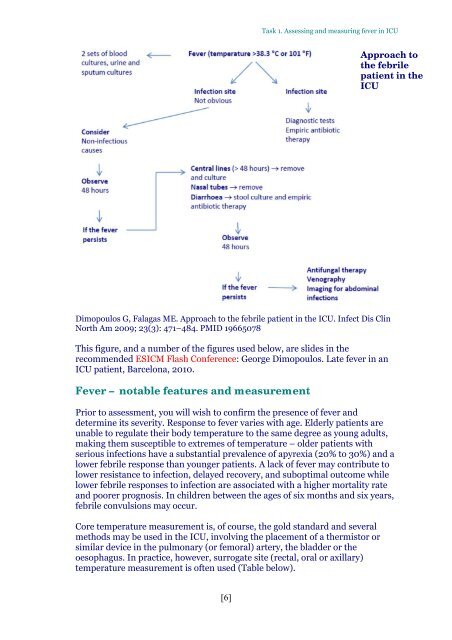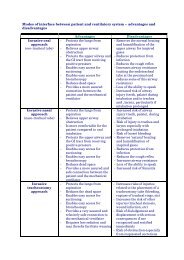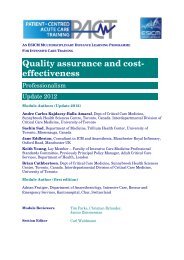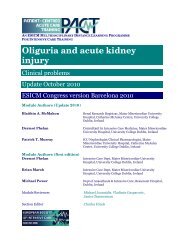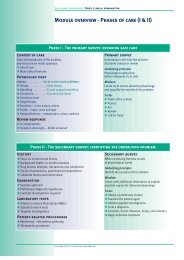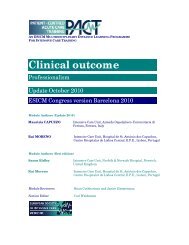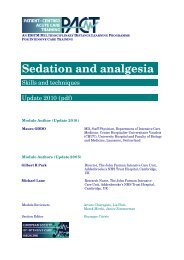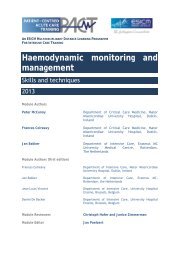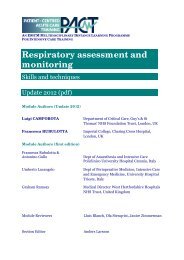Pyrexia - PACT - ESICM
Pyrexia - PACT - ESICM
Pyrexia - PACT - ESICM
You also want an ePaper? Increase the reach of your titles
YUMPU automatically turns print PDFs into web optimized ePapers that Google loves.
Task 1. Assessing and measuring fever in ICU<br />
Approach to<br />
the febrile<br />
patient in the<br />
ICU<br />
Dimopoulos G, Falagas ME. Approach to the febrile patient in the ICU. Infect Dis Clin<br />
North Am 2009; 23(3): 471–484. PMID 19665078<br />
This figure, and a number of the figures used below, are slides in the<br />
recommended <strong>ESICM</strong> Flash Conference: George Dimopoulos. Late fever in an<br />
ICU patient, Barcelona, 2010.<br />
Fever – notable features and measurement<br />
Prior to assessment, you will wish to confirm the presence of fever and<br />
determine its severity. Response to fever varies with age. Elderly patients are<br />
unable to regulate their body temperature to the same degree as young adults,<br />
making them susceptible to extremes of temperature – older patients with<br />
serious infections have a substantial prevalence of apyrexia (20% to 30%) and a<br />
lower febrile response than younger patients. A lack of fever may contribute to<br />
lower resistance to infection, delayed recovery, and suboptimal outcome while<br />
lower febrile responses to infection are associated with a higher mortality rate<br />
and poorer prognosis. In children between the ages of six months and six years,<br />
febrile convulsions may occur.<br />
Core temperature measurement is, of course, the gold standard and several<br />
methods may be used in the ICU, involving the placement of a thermistor or<br />
similar device in the pulmonary (or femoral) artery, the bladder or the<br />
oesophagus. In practice, however, surrogate site (rectal, oral or axillary)<br />
temperature measurement is often used (Table below).<br />
[6]


